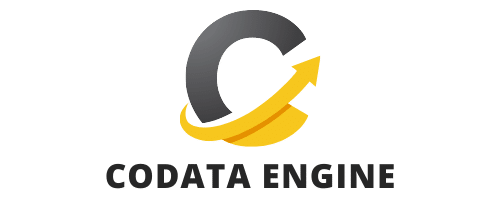As we step into the future of education, the role of coaches in the development and progress of athletes becomes increasingly crucial. More than just whistle-blowers, they are the ones who impart the right values, skills, and knowledge to the athletes. They guide and inspire them, shaping the future of sports. Hence it’s absolutely vital for these educators and trainers to keep abreast with the evolving sphere of sports and athletics. This is where Continuing Professional Development (CPD) programs come into play. These programs are designed to facilitate learning and development in the dynamic field of sports.
Understanding the Importance of Continuing Professional Development in Sports
At its core, the aim of CPD in sports is to ensure that educators and trainers never stop learning. This section will explain why this is so critical.
Also read : What Is the Future of Interactive TV Shows That Allow Viewer Participation?
CPD is not just about acquiring new knowledge, but also about enhancing existing skills and understanding. It encourages coaches to carry on their learning journey throughout their professional life. In the rapidly changing domain of athletics, staying updated with the latest practices and techniques is vital.
For instance, changes in sports laws, evolution of equipment technology, advancements in sports medicine, and shifts in coaching methods are some areas where CPD can make a significant difference. It’s not just about improving the coach’s credentials but also about enriching the athlete’s learning experience.
Additional reading : Can You Prepare a Traditional Sourdough Bread with a Crunchy Exterior?
Structuring a CPD Program for Sports Coaches
As you embark on the journey of creating a CPD program for your sports educators, you need to consider several factors. It’s essential to have a well-structured, comprehensive program that takes into account the unique needs and aspirations of your sports coaches.
Firstly, a good CPD program should cover both theoretical and practical aspects of athletic coaching. The theoretical part could include sessions on sports psychology, effective communication, dealing with injuries, and more. The practical section should focus on new training methods and techniques, and health and safety procedures.
Secondly, it’s essential to keep the program flexible. Allow your coaches the freedom to learn at their own pace and time. Provide various learning options like workshops, webinars, online courses, and on-the-job training.
Lastly, don’t forget to incorporate a robust feedback system. The coaches should be able to express their views on the program, suggesting improvements or changes as they see fit. This will not only enhance their engagement but will also make your CPD program more effective.
Using Technology to Enhance CPD for Sports Coaches
In the digital era, technology has a significant role to play in enhancing the efficacy of CPD programs. Virtual learning platforms, interactive webinars, and mobile applications can make learning more accessible and fun for the coaches.
Online platforms offer a wealth of resources for sports education. A vast library of videos, articles, podcasts, and e-books on various aspects of sports coaching can be made available to the coaches. They can access these resources anytime, anywhere, and learn at their own convenience.
Simultaneously, interactive webinars allow sports educators to learn from experts worldwide without leaving their homes. Mobile applications can enable coaches to track their learning progress and set personal goals.
Real-world Application of CPD in Sports
It’s not enough to just learn new things, coaches should also be able to apply that learning in their professional life. This section will explain how CPD can be practically implemented.
A real-world application of CPD in sports coaching could mean using a new training technique learned from a webinar in an athlete’s training regimen. It could be applying knowledge gained from a sports nutrition course to devise a healthy diet plan for the athletes.
CPD also encourages coaches to reflect on their coaching styles and make improvements. They can use the learning from a session on communication skills to build better relationships with their athletes.
In conclusion, a well-planned and effectively implemented CPD program can make a significant difference in the quality of sports education and training. It not only enhances the coaches’ skills and knowledge but also improves the athletes’ overall learning experience.
The Role of Trainers Association in Promoting CPD
As the world of sports continues to evolve, the participation of the Trainers Association in promoting Continuing Professional Development (CPD) has become more crucial than ever. This section will delve into the role of these associations in shaping the future of sports education.
Trainers Associations, like the National Athletic Trainers Association (NATA), play a significant role in promoting and implementing CPD. They work towards building a culture of continuous learning among athletic trainers and coaches. These associations provide a platform for sports educators to share knowledge, explore new ideas, and learn from each other’s experiences.
One of the ways associations promote CPD is by organizing various learning opportunities, such as workshops, seminars, and conferences. These events provide a chance for coaches and trainers to stay updated on the latest practices in sports medicine, athletic training, and coaching methods.
Moreover, Trainers Associations can also leverage technology to promote CPD. Through virtual seminars and online resources, they can facilitate continuing education in a more accessible and convenient way. They can provide an online platform for sports coaches to access a wealth of resources, from sport-specific training techniques to best practices in athlete development.
As part of their role, Trainers Associations also reward and recognize coaches who show commitment to their professional development. This recognition not only motivates the coaches to continue their learning journey but also promotes a culture of excellence in coaching practice.
The Impact of CPD on Athletic Performance
Implementing a robust CPD program for sports educators and trainers has a profound impact on athletic performance. This section will explain how continuous professional development contributes to enhancing the performance of athletes.
Sports coaches, equipped with the latest knowledge and skills through CPD, can effectively bring out the best in their athletes. This is because they are better prepared to understand the individual needs of the athletes and tailor their coaching methods accordingly.
For example, a coach with a recent certification in sports medicine can better address an athlete’s injuries, thereby reducing the athlete’s downtime and improving their performance in the long run. Similarly, a coach who has attended a seminar on sports psychology can help athletes overcome mental blocks that may be affecting their performance.
Moreover, CPD also enables coaches to understand and implement sport-specific training techniques that can significantly improve an athlete’s performance. For instance, a football coach who has attended a workshop on the latest football training methods can implement these techniques to enhance the performance of his team.
Furthermore, CPD trained coaches also tend to have better athlete development strategies. They can use their learning to devise training regimens that not only improve the athlete’s current performance but also focus on their long-term development.
Conclusion
In conclusion, Continuing Professional Development (CPD) is an indispensable tool for sports educators and trainers. It is a journey that allows them to keep pace with the evolving field of sports, enhancing their knowledge, skills, and understanding. It is a process that engages them in lifelong learning, ensuring they stay relevant and effective in their roles. Therefore, it is crucial for athletic trainers, sports coaches, and trainers associations to prioritize and invest in CPD. In doing so, they not only enrich their coaching practice but also significantly contribute to the overall development and performance of their athletes.












